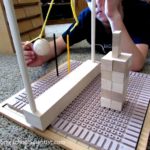Wrecking Ball Physics Experiment {and lesson}
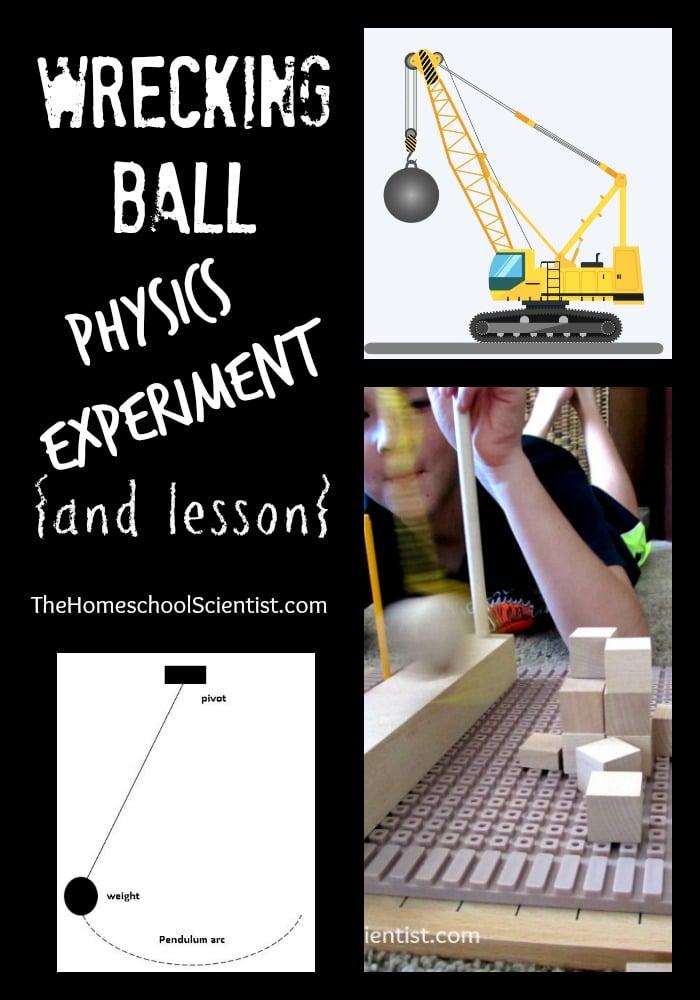
Video: Best Building Demos
Even though wrecking balls function with less precision than other demolition methods, the effectiveness of wrecking balls is still determined by physics.
Video: Wrecking Ball Demolition
The kids and I took our fascination with wrecking balls and turned it into a physics experiment. I’ll show you how we did it, but first a little wrecking ball physics lesson.
Wrecking Ball Physics and How a Pendulum Works
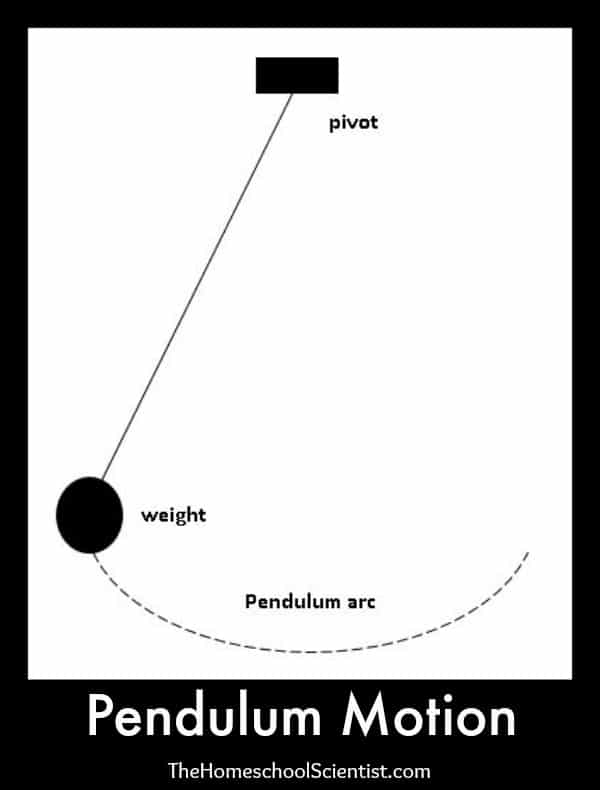
If we look at a wrecking ball, it is basically a pendulum. A pendulum is a weight hung from a pivot point and allowed to swing freely until the friction between the weight and the air slows and stops the swinging of the pendulum and it eventually comes to a stop.
Pendulums work because of the energy involved in their systems. When the pendulum weight is raised, it contains gravitational potential energy. This is the energy stored by the weight because of its position above the ground. When the weight is released, that potential energy is converted into kinetic energy or energy of motion.
As gravity pulls the weight down toward the earth, both the kinetic energy and velocity or speed, of the weight increase until the weight reaches the bottom point of the pendulum arc. This is the point of highest kinetic energy and velocity. After the weight passes the bottom of the arc, these both decrease until the weight stops at the top of the arc at the opposite point of the release.
At this point, the kinetic energy is back to zero and the weight now contains gravitational potential energy again. The weight only stops for an instant until gravity pulls the weight back down and the process starts again.
Wrecking Ball Physics – Wrecking Balls And Momentum
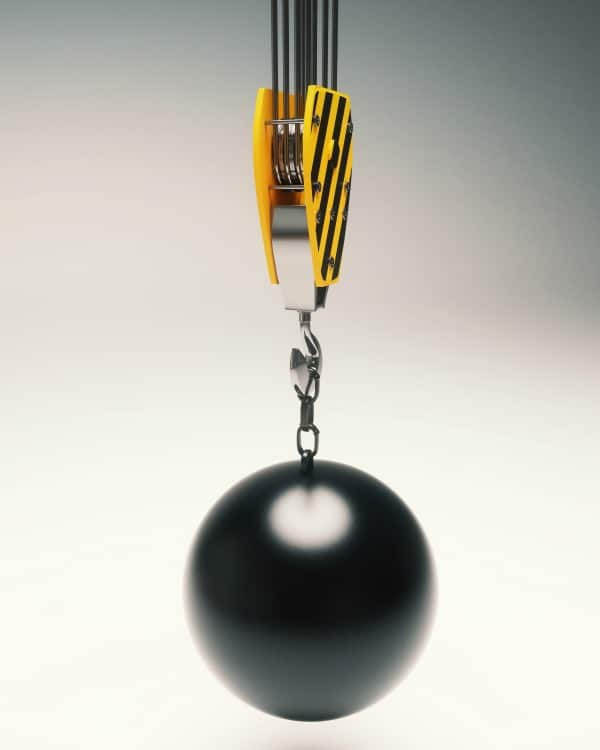
The entire point of a wrecking ball is to knock things over. To do this, the wrecking ball must apply force to the structure it is trying to destroy. To create the amount of force necessary, the crane operator needs to create a lot of momentum. As momentum increases, force increases.
Momentum is a function of mass and velocity and can be calculated as:
momentum= mass x velocity
Since the mass of the weight of the wrecking ball is constant, the velocity of the weight as it swings must be increased if momentum is going to be increased. In our pendulum discussion, we learned that the released weight increases in velocity as it nears the bottom of the pendulum arc. If the weight gains velocity as it falls, then to increase the velocity, the distance the weight falls must increase. This means the weight needs to be released from a higher point.
If the peak velocity is more when the weight is released from a higher point, then the momentum of that weight increases, as well. Therefore, the force of the weight hitting a structure increases. This means the destructive power of the wrecking ball should then be more when the weight is released from a higher point.
The Wrecking Ball Physics Experiment
If the theory above is true, the crane operator controlling the wrecking ball should be able to control the force of the wrecking ball by changing the height from where the ball is “released” or from the top of the arc of the swing. This wrecking ball physics can be tested quite simply using children’s blocks or Legos and some household materials. We used a wooden building set, as pictured below.
Here are instructions using household materials.
Wrecking Ball Physics Experiment
Materials
- 1 A tennis ball or another ball of the same size and weight
- 1 Rubber band
- 1 Piece of string
- Blocks or Legos to make a tower
- Broomstick or piece of PVC pipe
- 2 Chairs
- Measuring tape
Instructions
- Wrap the rubber band around the ball.
- Attach the string to the rubber band.
- Tie the other end of the string to the handle or piece of pipe. The ball should clear the floor by about 3 to 5 inches and be able to swing freely. Ask your child to identify the pivot point.
- Build a tower of blocks. Measure the height of the tower so your child can build to the same height as they test varying pivot points.
- Rest the handle or pipe on the back of the two chairs and have two helpers hold each end steady.
- Have one student hold the pendulum at the ready to let it go and knock the blocks. But, before they let go, have another person measure the height of the ball. Record that height on a piece of paper.
- How many blocks fell over? How far did they travel when knocked over? Now hold the ball farther back. What happened as the wrecking ball was pulled back more and more?
Here is another option using a set of building blocks and string.
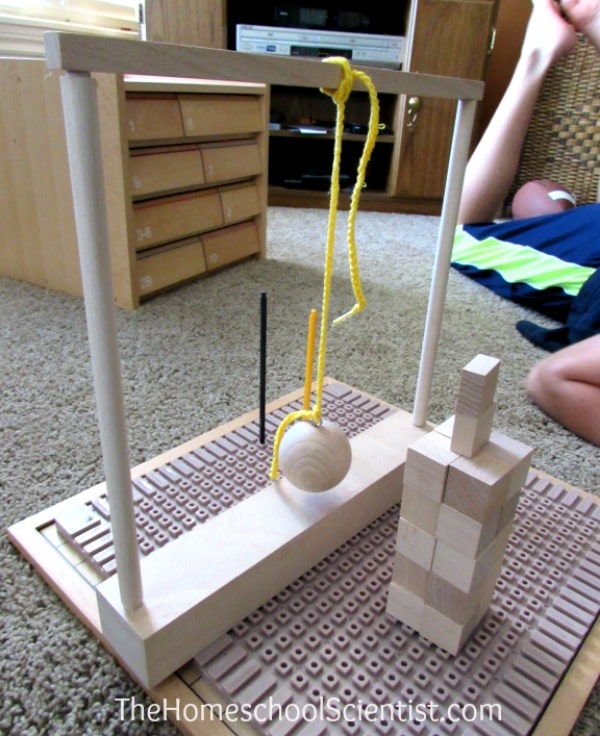
First, create a pendulum to simulate a wrecking ball. Then, stack blocks as a structure that the “wrecking ball” can hit. We used a Spielgaben wooden block set and used the pegboard pegs to mark the heights from where the ball is to be released.
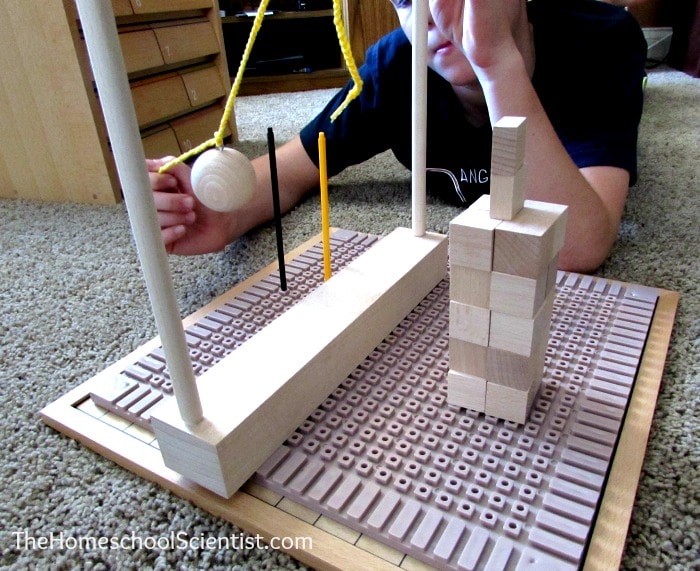
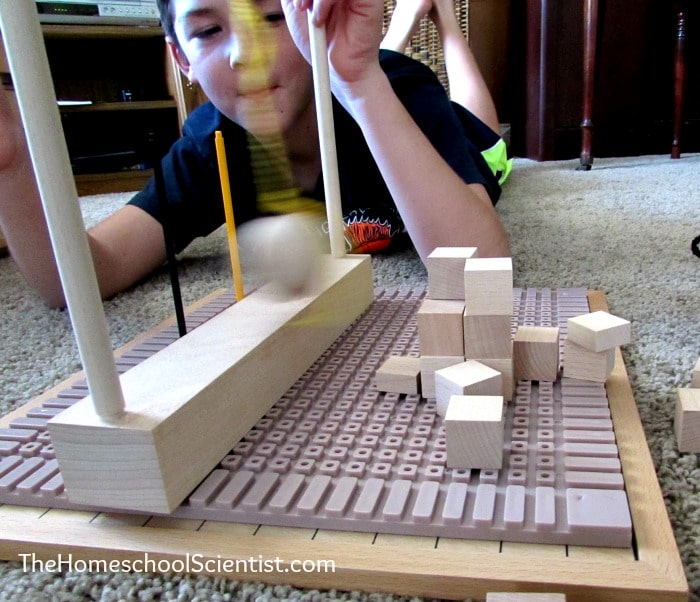
More Physics Experiments
Steel Wool And 9 Volt Battery Experiment
More Spielgaben Science Ideas



